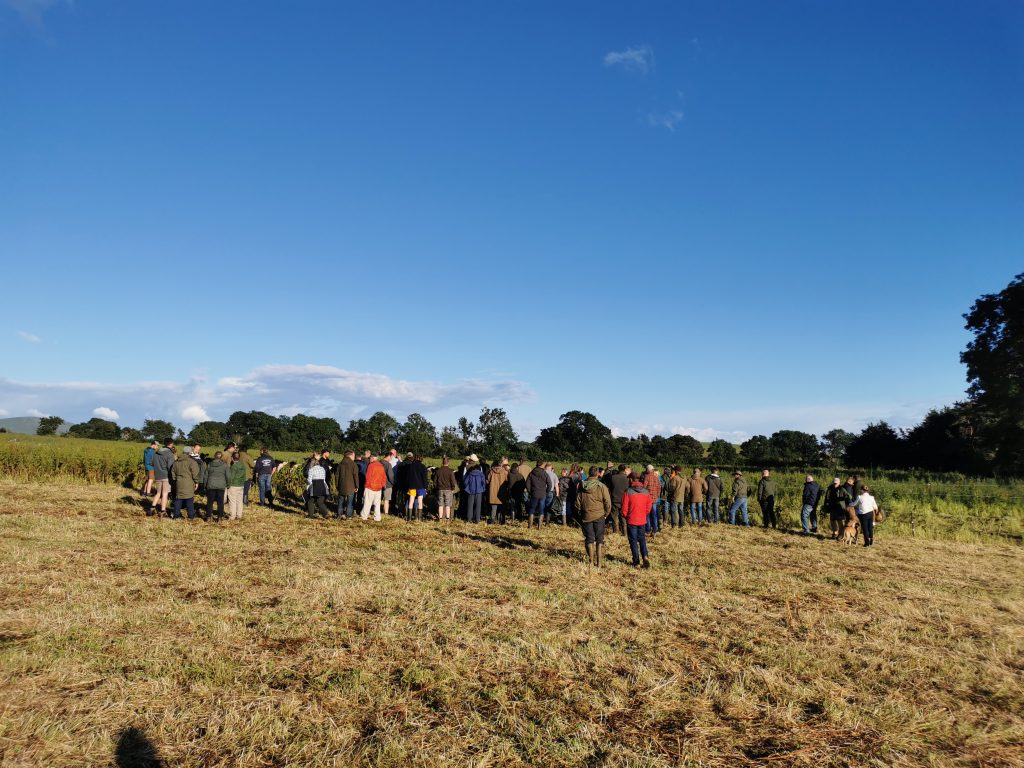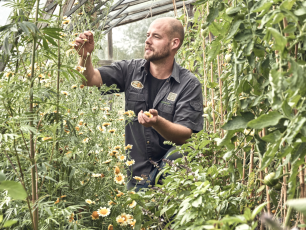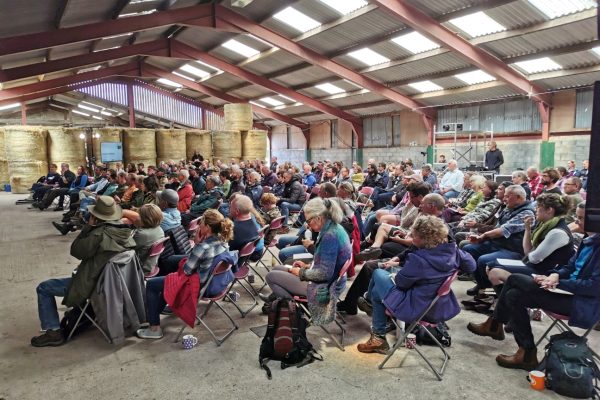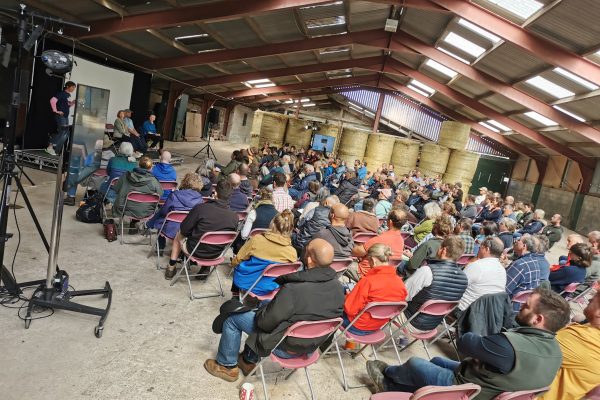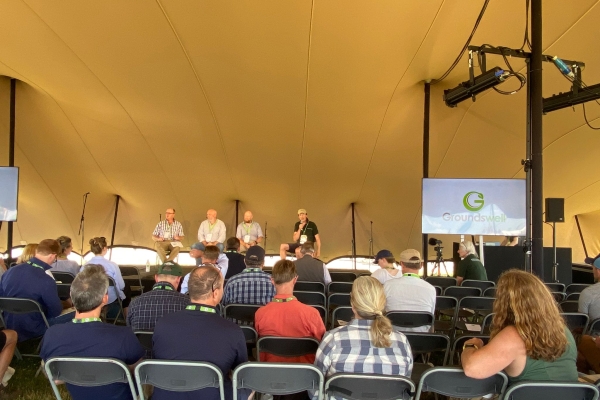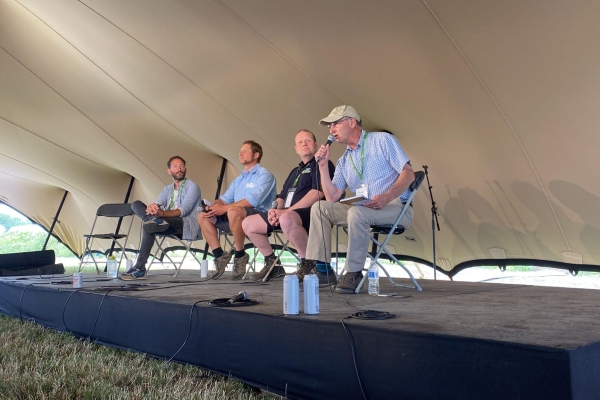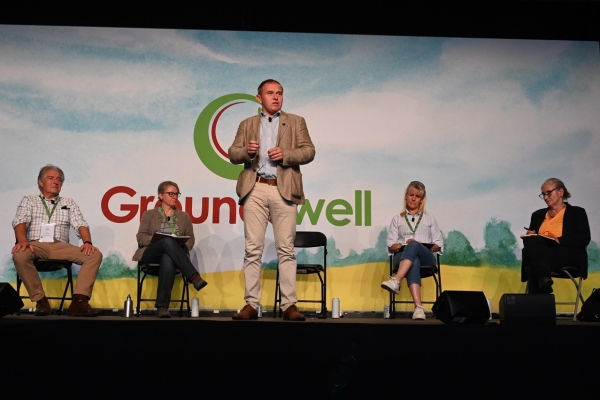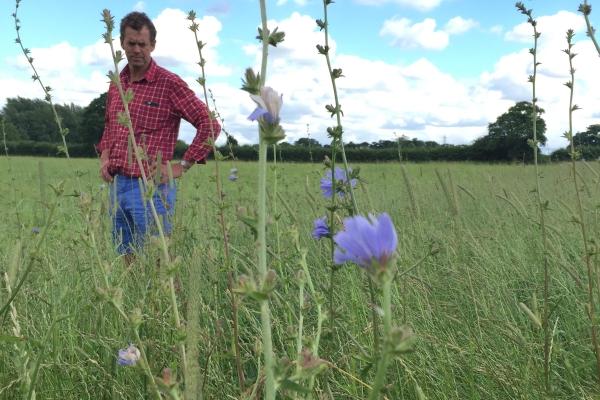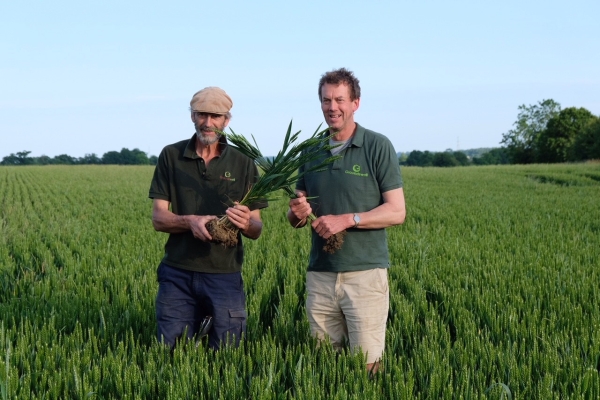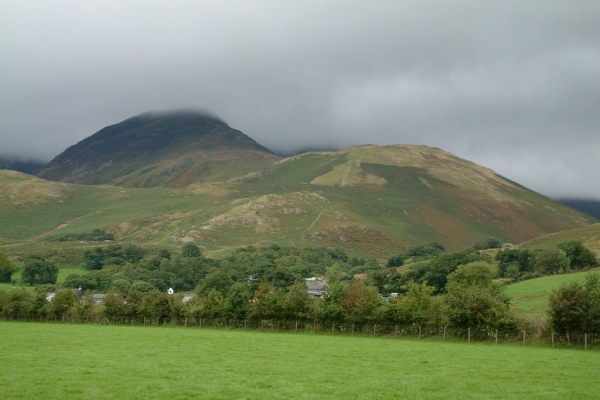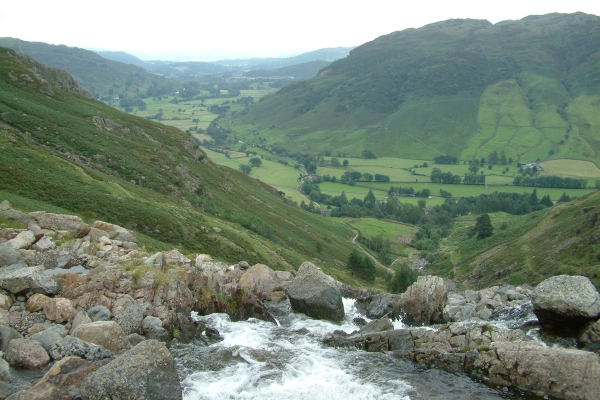An interview with Stuart Johnson
In the lead up to one of the year’s most hotly anticipated event, Carbon Calling Conference organiser and regenerative farmer Nic Renison (NR) took some time out to catch up with Stuart Johnson (SJ). Stuart, recently crowned ‘Soil Farmer of the Year’, ran a lunch time workshop at the conference about ‘How to brew up teas and other soil amendments’ and was also on the panel for the afternoon session ‘Farmers helping other farmers’
Stuart and his family are currently managing over 400 hectares (1000 acres) of land with a mixture of approaches; around 218 hectares (540 acres) is under long term regenerative management, with an additional 113 hectares (280 acres) having regenerative practices introduced on to it and a further 89 hectares (220 acres) being farmed conventionally. They run a mixed farming operation, but Stuart says they see themselves as livestock farmers who have the capability to grow their own arable crops for home use. They have anywhere from 250-400 head of cattle per year with 800 breeding sheep and followers, and 32- 40 hectares (80-100 acres) of arable land.
NR: What drives your day-to-day decision making on the farm?
SJ: My main interest is creating and improving a thriving commercial business in partnership with the environment. We are trying to fit our business within the environment’s abilities rather than trying to impose and force the environment to succumb to our ideology. I am particularly interested in the cattle and the challenge of a profitable, high health suckler cow in a forage-based system, and understanding what creates a functioning healthy soil system and what we can do to enhance this to stimulate a self-generating cycling of nutrients and in turn create nutrient dense food.
NR: How does this feed into your long term vision?
SJ: The long-term motivation is to stimulate biology, soil function and livestock genetics (and epi-genetics) enough to allow us to completely remove all synthetic applications and livestock additions without compromising financial output. It’s a work in progress but as long as we keep improving year on year, then that’s positive.
NR: When did you first start thinking differently about how you farm?
SJ: Initially around 2012 with the arable operation, and it was all down to the financials. There wasn’t much thought for social or environmental benefits at the time, that very much came later as we realised it was all interlinked. After initially experimenting with various methods; shallow ploughing, strip tillage drilling, and various grazing techniques, we did see some successes, and also numerous failures. Reduced tillage (and eventually reduced inputs) seemed to work on the healthier soils and once we established the importance of this link it opened up a whole new world of research and education, and the entire system snowballed from here.
NR: Any lightbulb moments along the way?
SJ: Not so much a lightbulb moment but I guess around 2017/18 after still varying results, and after we had spent 5 years dabbling and experimenting with various methods, we still had a standing crop of winter barley wilting and dying off during a particularly prolonged dry spell. It was around this point that we decided to become more intentional about what we were doing. Either educate and understand it more to ensure it worked or revert back to conventional methods that, although more damaging, were often more consistent. We chose to persevere, but with intention behind it this time, and have made significant strides since.
NR: Where did you look for ideas and inspiration?
SJ: Initially I began with Graeme Sait and Joel Williams who were good for amendments and navigating the transition periods. But it was around 2018 that I stumbled on Gabe Brown and Dr Allen Williams, and this was the first time we understood we were trying to regeneratively farm and there were principles, rules and processes we could follow to significantly improve our results. The knowledge, experience and ability of understanding regenerative agriculture has been integral to my progression.
NR: What did your family think when you wanted to change things up?
SJ: Initially there was understandably quite a bit of scepticism. We were high output, intensive farmers, and I was trying to shift our mentality from yield to margin, with some very different ideas. We began slowly, initially just with the arable side of things. But once we had some successes and little victories, this gave us the confidence to try more and keep expanding our endeavours. And we are now at the point where everyone is just about singing from the same hymn sheet with regards to what we are doing and where we would like to get to.
NR: What are you now doing that you would never have done before?
SJ: There is loads! Regularly digging holes, compost tea brewing, observations (which is critical), electric fence shifting, direct drilling, soil under the microscope….. The list goes on. I suppose a really big change that I never saw myself doing would be looking at dung beetles. If someone had told me 10 years ago I would be lying in the grass taking satisfaction from finding a geotrupidae dung beetle, I would have thought they were mad. However, here we are now, and understanding that these indicator beetles being here is a sign of a functioning ecosystem, which means we are bringing resilience to the environment, and in turn resilience to our business and our financial performance, affords a very calming satisfaction.
NR: What has changed from a feed and fertilisation standpoint?
SJ: We have now gone 2 winters just grazing forages for our ewes, so haven’t had to buy the supplementary feed that we used to, a big time and monetary saving. The cattle grazing period has extended from March to late January, so we aren’t housing as many cattle or for as long as we previously used too, so feed purchasing and production has significantly reduced. Chemically we are now using a fraction of what we used, approximately 80% less. We used to use around 70-90t per year of synthetic fertiliser and over last 2 seasons we have used less than 10t total per year and only on arable ground.
NR: Are you excited for your farming future?
SJ: Yes, very excited going forward to see where we can take things and how more improvements can be made, but also apprehensive about the future of farming in general. As a business we are well positioned to expand and always on the lookout, but the opportunity in the farming landscape has been almost nonexistent for a very long time. We are tenant farmers and buying land is sadly looking like a lost cause the way the prices just keep escalating. Renting land or expanding is incredibly difficult due to land coming out of production for tree planting and the generally short-term offerings. Regenerative farming is critical to future generations, the environment, and food production going forward. It requires a long-term outlook to realise the potential and benefits of what we can do; low-input farming generating large amounts of nutrient-dense food benefiting the environment, biodiversity, the consumer and producers alike.
If you didn’t make it to the conference, you’re in luck, sessions will soon be available to watch online so watch this space…
